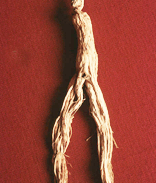DIABETES

Recently, I took a taxi to Gleneagles Medical Centre. In the course of talking with the Malay taxi man, I found that he is also a diabetic.
The reason why I said that he is also a diabetic, because it seems that everywhere I turn to, there is someone who is his or herself diabetic or has someone in their cycle of friends that is diabetic.
I understand from some medical reports that almost 15% to 20% of the peoples in Singapore, maybe even in the affluent countries are diabetic.
I have a personal experience on this matter. My mum suffers from this sickness for almost 33 years . At first, none of her children paid much attention to it, as she always played down her symptoms of the sickness, which is constant thirst, frequent urination , hunger and tiredness.
During those years, she was under the attention of a general practioner and eventually an endocrinologist. It begun with simple diabetic medications to eventually insulin injections.
In 1998, her endocrinologist diagnoised ,in addition to her diabetes, that she had 3 blocked heart arteries. We were shocked that a simple sickness could develop to something so serious and life-threatening.
Immediately after this discovery , she underwent a triple heart bypass operation in Mount Elizabeth Hospital that costed about S $ 120,000/- including 2 weeks stay in the hospital.
Anyone suffering from this sickness or has a family history must be aware that this sickness can lead to complications like heart problems and kidney problems. It is thus prudent to take careful measures in their intake of the right food and to start doing regular exercises without delay. I will discuss in detail the type of foods to take and what foods to avoid.
Let me explain what happens in our human body. Our blood has sugar in the bloodstream. This level of sugar is to ensure that we have energy to do things, to walk, and to do physical activities.
The level of sugar in the blood is controlled by the organ pancreas, which is behind the stomach. The pancreas controls the production of insulin that regulates the blood sugar level . If the blood sugar is too high due to high intake of high glucose food, the pancreas will produce sufficient insulin which is a hormone, to bring the blood sugar back to normal.
 Diabetes happens when the pancreas begin to malfunction due to aging, hereditary, reasons, sickness and many other factors, like stress.
Diabetes happens when the pancreas begin to malfunction due to aging, hereditary, reasons, sickness and many other factors, like stress.To find out about one's potential of being a victim, one could request a doctor to carry out a simple test called the oral glucose tolerance test. Usually the individual arrives at the clinic early in the morning after an overnight fast. A blood test is taken to find out the level of the sugar in the blood after the fast.
After blood has been drawn out, the individual will be given a bottle of high glucose solution. He/She will have to return 2 hours later, and a fresh set of blood is drawn. Both blood samples are then sent to the laboratory for analysis. The difference is these two figures will ascertain whether the individual is diabetic.
The readings of the blood sugar is recommended as shown below:
1. 72 to 108 mg/dl ( 4 to 6 mmol/L) as ideal ( after overnight fast )
2. 110 to 145 mg/dl ( 6.1 to 8.0 mmol/L ) as optimal
3. 150 to 180 mg/dl ( 8.3 to 10 mmol/L) as sub-optimal
4. above 190 mg/ dl ( above 10.5mmol/L) as unacceptable
I will now discuss the foods that a diabetic can take and what foods they should reduced in their daily meals.


 Avoid high glycemic foods like white bread, potatoes, yam, pancake, doughnut, biscuit, white flour and rice (other than basmati rice). Avoid fast foods ,ice cream,fruit juices with added sugar.
Avoid high glycemic foods like white bread, potatoes, yam, pancake, doughnut, biscuit, white flour and rice (other than basmati rice). Avoid fast foods ,ice cream,fruit juices with added sugar. 

Be careful of sweet fruits like durian, water melon and mango. Only consume them in small quantity and divide them into small portions of few meals.
Some of the foods that can help lowering the sugar levels are as follows:
1. mini- bittergourd ( momordica charantia) , known as Ampalaya in Philippines
2. petai seed (parkia speciosa), known as bitter bean, sticky bean
3. cinnamon stick ( cinnamomum zeylanicum) - take 6 grams daily on food throughout day.
5. Onion (allium cepa )
8. Lemon ( citrys limonium )
9. Artichoke ( cynara cardunculus)
10. grapefruit ( citrus paradise)
11. Asian Ginseng ( panax ginseng)
14. Oyster Mushroom ( pleurotus ostrestus )
Keeping sugar level under control is a tedious and lifelong commitment. There is no room for laziness or slackness. The affected person should obtain a glucose reading meter, available in most pharmacies. He/She should check on the blood glucose level 2 hours after eating and compare the reading with the standard guidelines given and act accordingly.
In addition, it is prudent to have some glucose tablets readily at hand. Again, this is available at most pharmacies. This is used for diabetic who find themselves hypoglycaemic or shaking because their food intake has been burned up and their glucose level have drop drastically. Don’t despise this simple tablet, because it could save you from fainting and even unwanted injury from falling due to shaking and dizzy spells.
Ok, I have only so much to share with you. Please use it to educate your friends , family members who are in this category.
I wrote this blog for the Malay taxi man who asked me all about diabetes. I hope he will get to read it and be familiar with the right foods to take. Take good care and help bring the diabetes population down.










































4 comments:
Great article..
I think there is alot of personal insights into diabetes that will be useful to the interested man in the street.
The information is very helpful and enlightening. I find the pictures particularly helpful.
Would you know how much of the recommended foods should one take every day to be effective?
THANKS for ur information.
Kind of you to spend time and effect to prepare this article for the good of others.
Greatly appreciated by me though I am not a diabetic. I can pass the info to my friends and relatives who are diabetics. Thanks!
Post a Comment